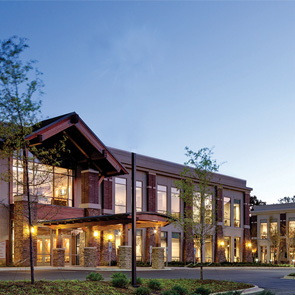
5/23/2018
MAHEC/UNC Eshelman School of Pharmacy, Asheville, NC
Naloxone co-prescribing program in family medicine residency clinic
Overview
Mountain Area Health Education Center (MAHEC) is a large family medicine residency program with integrated clinical pharmacists. We identified patients who met CDC-based criteria for naloxone — 50 morphine milligram equivalents (MME), concomitant benzodiazepine, history of an overdose, or history of opioid use disorder — and developed a naloxone co-prescribing program with the goal of educating providers on how and when to prescribe naloxone, educating patients on the need of naloxone, and increasing access to naloxone. We created templates in the electronic health record (EHR) to facilitate naloxone prescribing using a flagging system to identify patients eligible for naloxone. Additionally, educational materials and instructional classes were provided to emphasize the need of naloxone.

Key Elements of Success
A key element of success included the integration of IT to generate an accurate report of patients in need of naloxone. It was also essential to work with community pharmacies to identify and avoid barriers to filling naloxone. This program is sustained as a pharmacy student-run process, by which they maintain a registry of patients who are in need of naloxone. Annual didactic instruction is provided to medical residents to ensure awareness of proper naloxone prescribing methods.
Impact on Patient Outcomes
Prior to implementation of this program, 49.4% of our patients on chronic opioid therapy met criteria for naloxone, but only 3.4% had naloxone on their medication list. Following implementation of this program, 36.6% of our patients on chronic opioid therapy met criteria for naloxone and 58.8% of these patients had naloxone on their medication list. A total of 139 prescriptions for naloxone were written.
Role of the Pharmacy and Pharmacists
This project heavily incorporated pharmacy learners into the work flow. By doing so, it provides an application-based education opportunity for the pharmacy students related to the opioid epidemic, encourages interdisciplinary instruction with pharmacy students and medical residents, and limits the responsibility placed on pharmacy faculty members. The students are able to flag patients within the EHR, identify a current clinic patient who needs naloxone training, and provide instruction to the patient in real time. We utilize training videos found online at prescribetoprevent.org to ensure that all pharmacists and pharmacy learners are able to educate patients on proper naloxone administration timing and techniques.Lessons Learned
An accurate and easily generated report from our EHR is essential for the success of the program. The biggest challenge is often that patients cannot afford naloxone. Despite receiving a prescription and understanding the need and appreciation for the medication, the patient still may lack access due to financial barriers and excessive copays.Budget & Resource Allocation
This program is not budgeted given our reliance on the utilization of pharmacy learners. Providing pharmacy students with a valuable learning experience is particularly important to ensure that we are able to continue to have a mutual benefit for patients, learners, and faculty members.
Future Goals
We published a description of this program in JAPhA in 2017. Subsequently, we have evaluated our program to see how many patients are now prescribed naloxone and, of those, how many were actually able to obtain naloxone. We hope to disseminate that data in the near future. A key step is to work with community partners to identify ways for patients to obtain increased access to naloxone while limiting the impact of financial barriers.